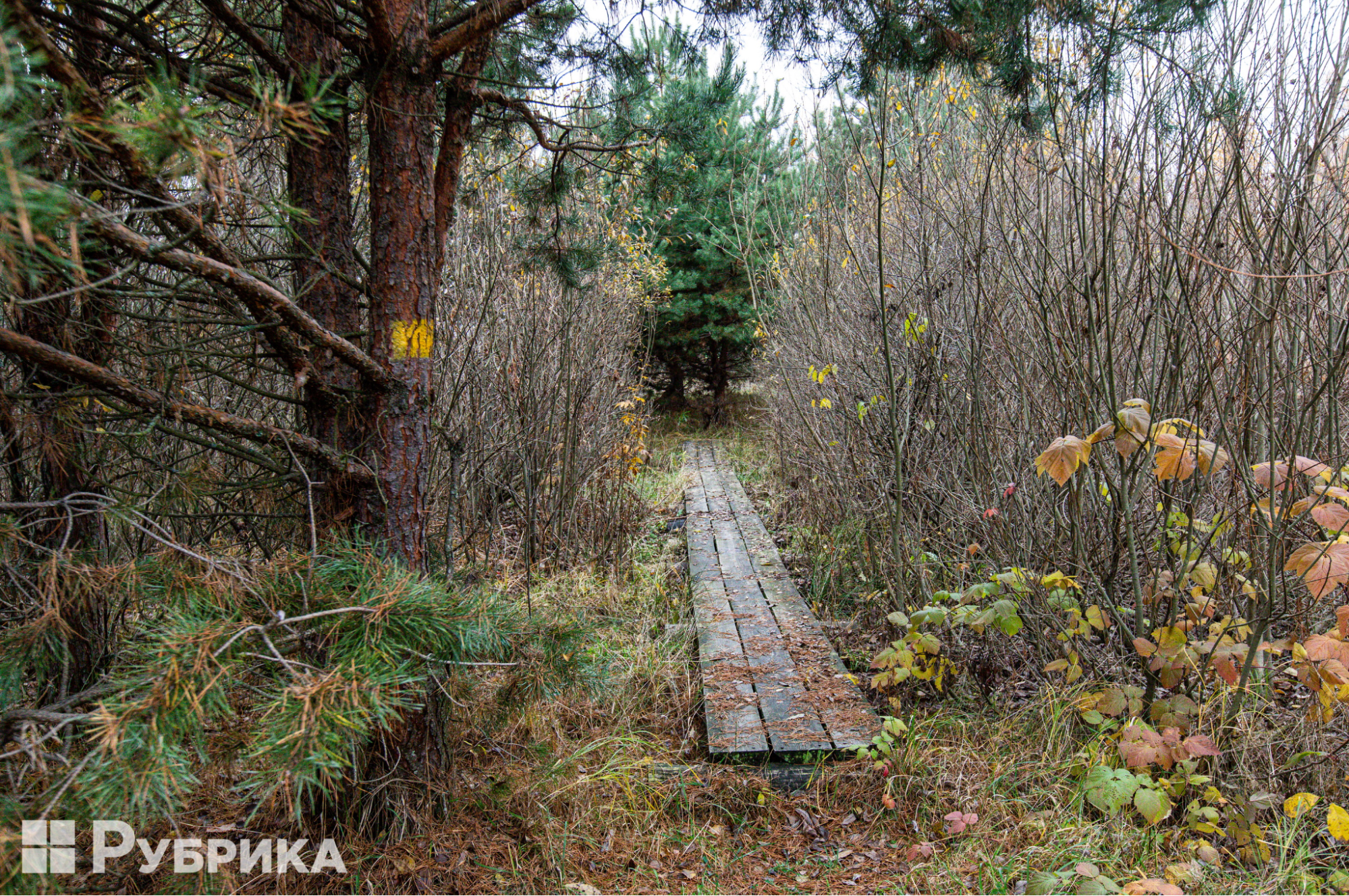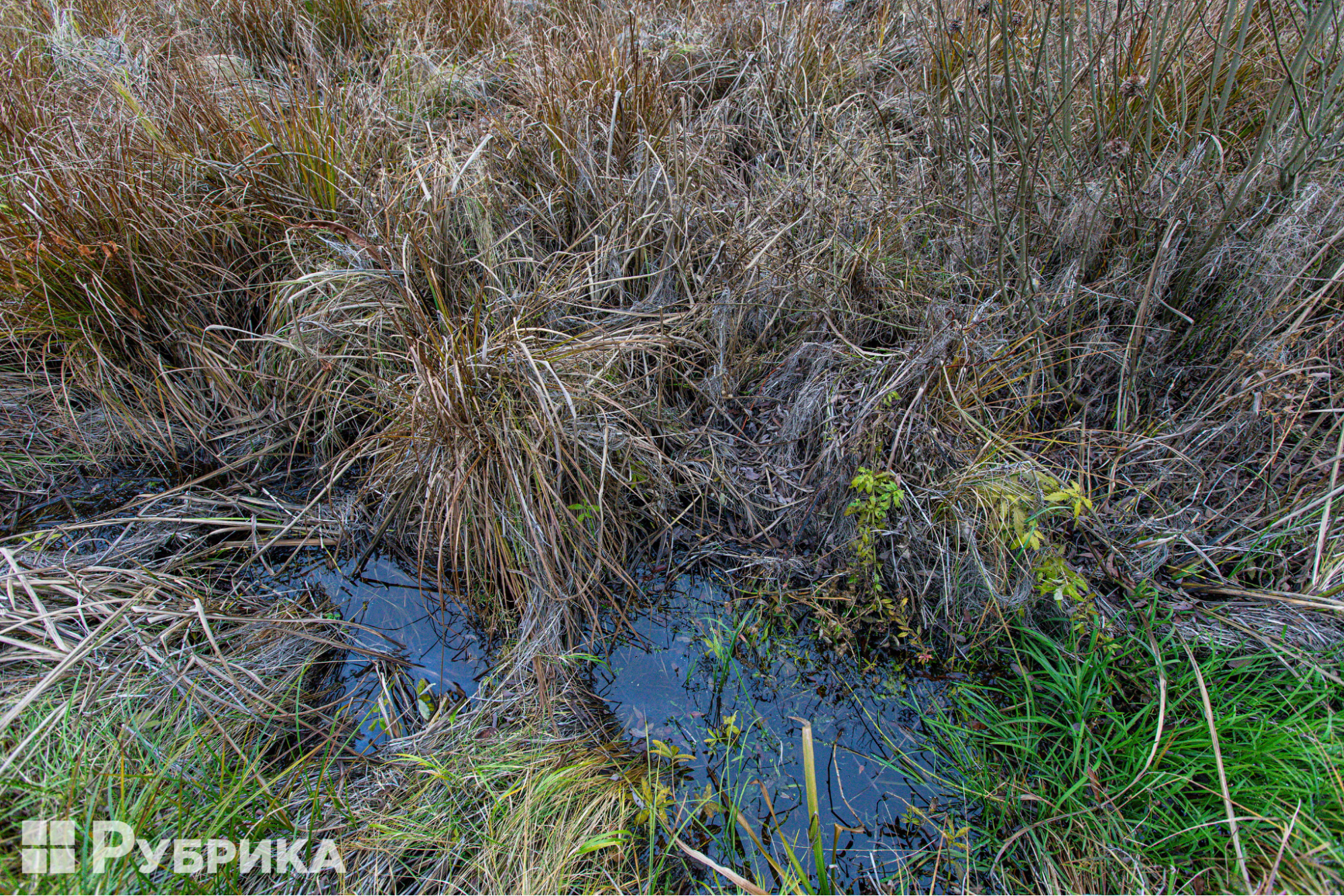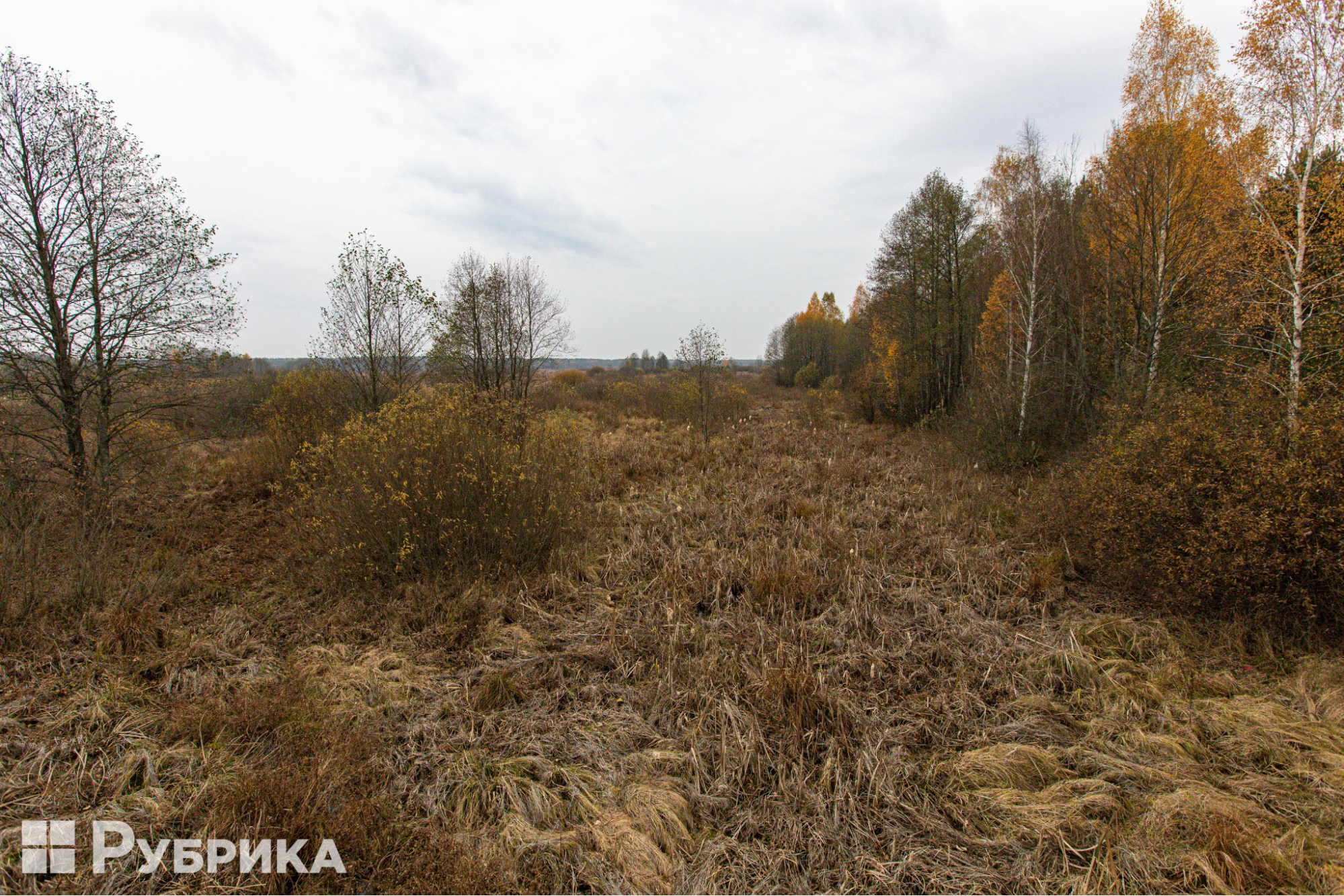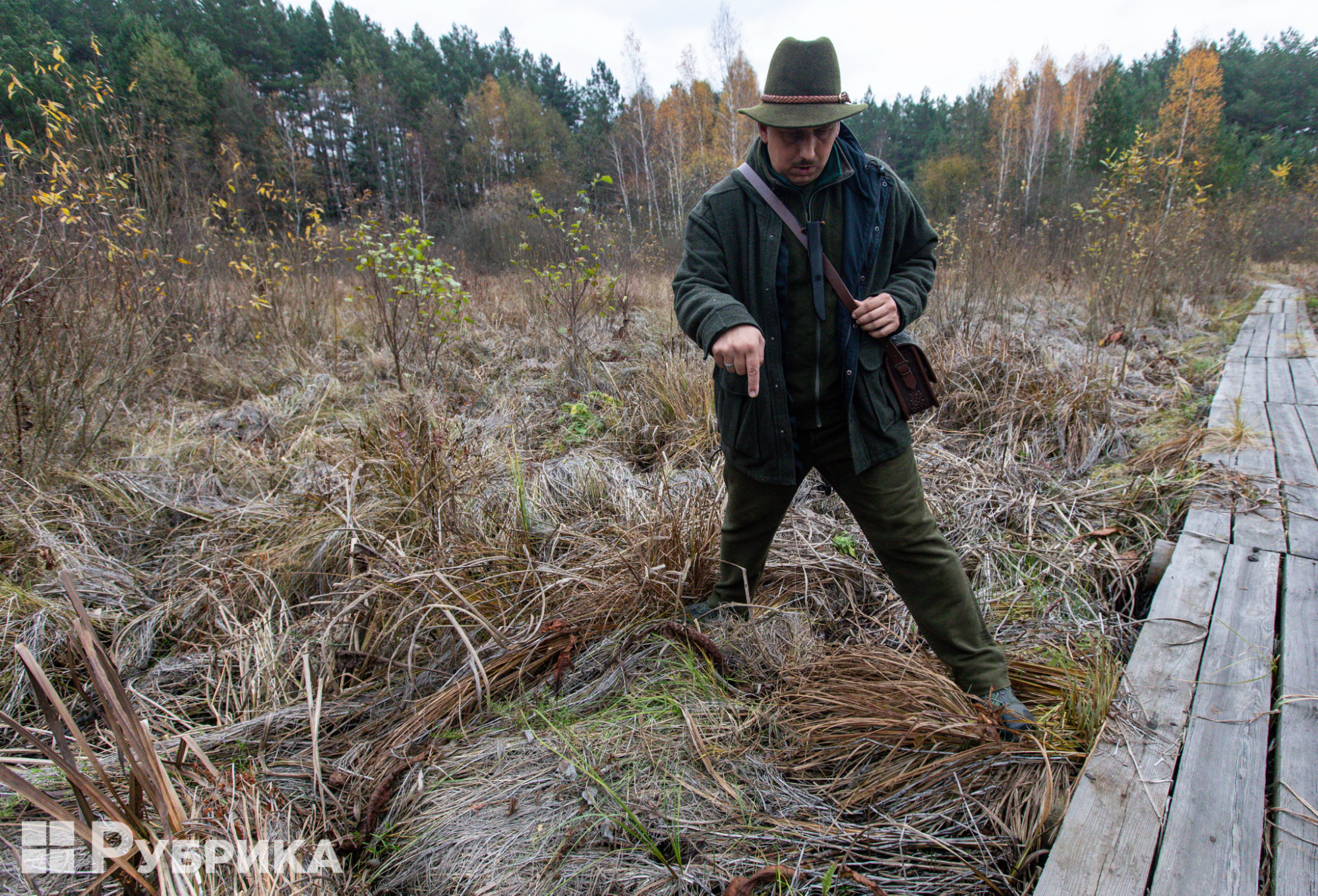
What is the problem?
The disappearing Swamp
Recently, Rubryka visited the Bondariv marshes on the territory of the Mizhrichynskyi Regional Landscape Park in the Chernihiv region. Andriy Saрaidak, a forester by education and the former director of the park, who gave us a tour of the area, told us that a few years ago, in a similar period, the swamp would have been completely filled with water, and the wooden path would have barely risen above its level. The reason for this is a decrease in the groundwater level.

Now, if you look at this area from afar, you may not even realize that the grassy area is a swamp that stretches for 12 kilometers and that it is from here that the Misha (Mesha) river starts. Moreover, not everyone knows that swamps are the ecosystems in Ukraine that are under threat.

In Soviet times, it was a standard practice to build drainage canals in swamps: they were dug throughout the territory of the land, like a "herringbone tree." Why was it necessary? Drainage channels collected water from the swamp and took it to the fields. After that, the swampy territory could be used for something "useful": for example, to build roads there or use these lands in any other way. For example, the Sovky park tract in the Svyatoshyn district of Kyiv stands on a swamp drained in this way.
During the USSR times, a huge amount of swamps were destroyed in this way: from the total fund of 6.57 million hectares, by 1988, almost half – 3.1 million hectares — had been drained. In addition, marshes are disappearing for other reasons — some swamps are threatened, for example, by lowering the groundwater level. So swamps become an ecosystem under threat. As a result, animals lose food, as the flora in the drained swamps changes, and people lose fresh water from the rivers.

What is the solution?
The swamps will return. Not only scientists and engineers are engaged in their restoration, but also… beavers
Fortunately, even drained swamps can be restored. But this is a costly process. If it is done with human intervention, it will be necessary to spend a lot of materials, equipment, and manpower to build new barriers on the channels that have been created, which will not allow the water to leave the swamp. In the US, there is a special methodology for restoring wetlands. But in Ukraine, everything is much simpler.

According to Andrii Sahaidak, the swamps will be restored if beavers decide to settle in the area. These animals instinctively build floodplains exactly where they are needed — without science or methodology. Floodplains, although they look like a pile of twigs, are actually structured, and the crevices are tightly packed with silt and earth. Such floodplains can stop a large flow of water, and over time, a large body of water appears again in an area with a large number of channels.
If the floodplains are not touched, they will increase over time. This is a natural and free way to restore swamps.
How to bring back the beavers?
There was already such an experiment when beavers restored a swamp in Ukraine. This happened with the Zalyvky swamp in the Lviv region, which was drained more than 50 years ago.
Last year, as part of a pilot project, hydrological, botanical, zoological, and biocenosis research was conducted here. Geodetic works were carried out, and the places of installation of dams and water distribution ditches were determined. Specialists also laid a network of observation mini-wells to monitor the groundwater level and purchased materials and tools to perform the necessary work. But the main thing that was done was the construction of two dams on the drainage channel, which contributed to the spillage of water on the territory of Zalyvky. The places were chosen according to the difference in relief and the current direction, so the dams began to slow down the water flow and contributed to its spillage over the territory.
"There were no beavers for a long time, but their population has recovered and they help conserve water on the territory of Zalyvky by building their own dams," one of the project participants, Lyubov Horban said.
What other problem exists?
The border strip near the border with Belarus is a huge area 2 kilometers wide, rich in biodiversity. In total, these are natural areas, mostly wetlands, with an area of 120,000 hectares, and all of them have different conservation statuses, but most of the areas are Emerald Network areas.
On September 21, the Verkhovna Rada of Ukraine adopted in the first reading draft law 7475, which, according to its purpose, is designed to strengthen the protection of the state border of Ukraine, which entails the removal of land from the nature reserve fund and the construction of the necessary infrastructure on these territories: roads, buildings, fences.
The desire to separate from russia with a three-meter concrete fence is quite healthy, but it is necessary to do it where the risk of the enemy crossing the border actually exists. Such decisions, in turn, increase the risk of destruction of natural ecosystems and, in some cases, perhaps even the risk of creating better conditions for russian troops to advance into the territory of Ukraine from the north. Oleksiy Vasylyuk, Head of the Ukrainian Environmental Protection Group, noted this. What exactly is the danger – we will tell you further.
Прикордонна смуга біля кордону з Білоруссю — це величезна територія завширшки у 2 кілометри, що рясніє біорізноманіттям. Загалом це природні угіддя, здебільшого — болотяні, площею 120 000 гектарів, і всі вони мають різний природоохоронний статус, але більшість територій — це території Смарагдової мережі.
What is the solution?
Leave everything as it is
Ecologist Oleksiy Vasylyuk criticized this decision of the authorities since the swamps themselves are a natural barrier. He reminds how in the early spring of 2022, dozens of russian tanks got bogged down in the swamps of Ukrainian Polissia. Indeed, at that time, russian equipment advanced deep into Ukraine only along highways. For the russians, who broke through to Kyiv in February-March, the Polissia marsh also became an obstacle to the offensive with a wide front.
If we are currently talking about a possible invasion of the Volyn and Rivne region from the territory of Belarus, here, too, it is worth understanding that the northern strip of Ukraine's territory and the southern strip of the territory of Belarus is a swampy zone and forests practically impassable for military equipment. Swamps prevent a large-scale offensive. The enemy will have to move only through suitable roads, and there are few of them.
Again, the same principle applies to swamps. Rather than making new decisions and spending resources on their implementation, it is better to leave nature alone.
Therefore, Oleksiy Vasylyuk emphasizes that natural marshes in the north of Ukraine should be protected and irrigated to increase defense capability.
"The better natural landscapes will be preserved, the more they will be watered — the better Ukraine will be protected from military invasion," the ecologist emphasizes.
Newsletter
Digest of the most interesting news: just about the main thing







